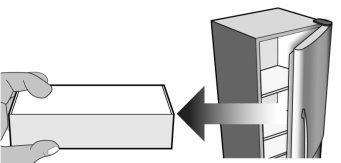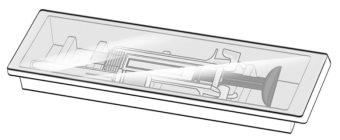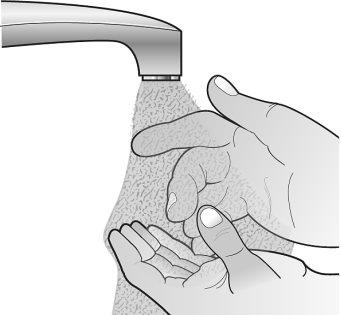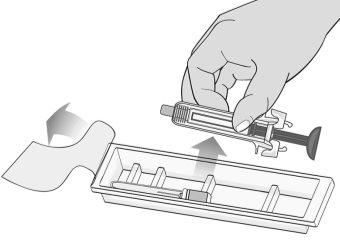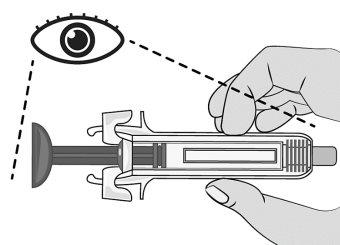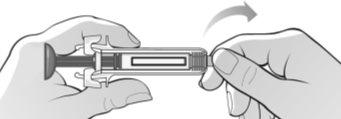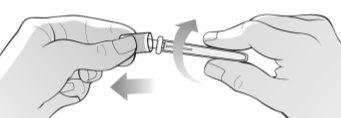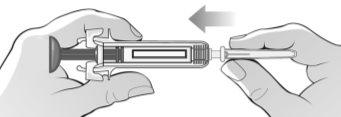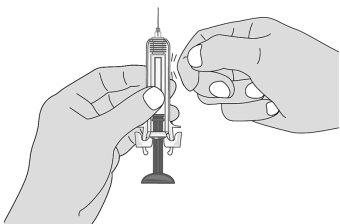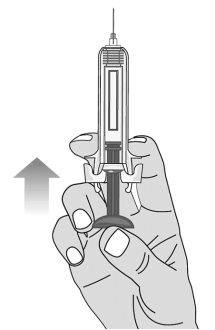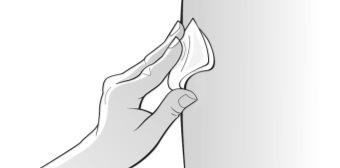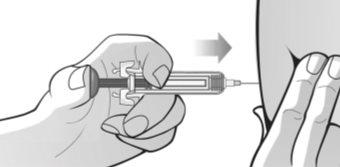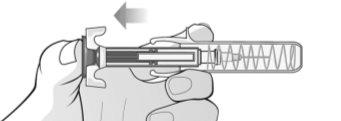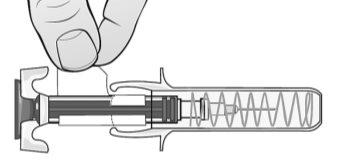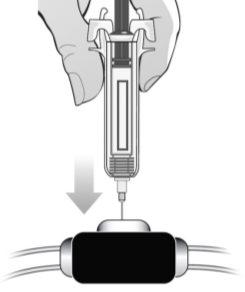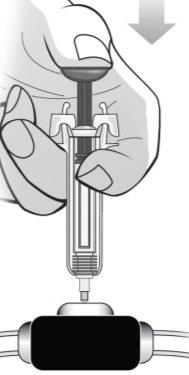
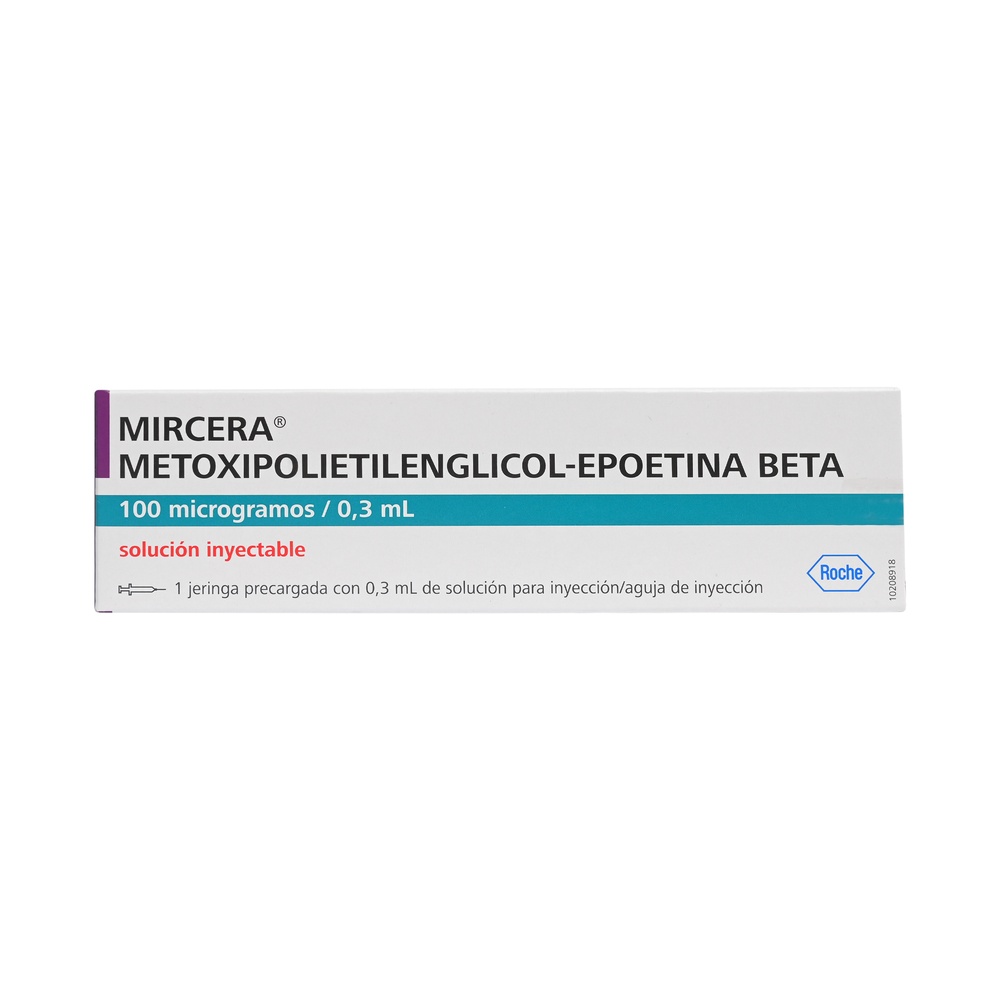
МИРЦЕРА 30 микрограмм/0,3 мл РАСТВОР ДЛЯ ИНЪЕКЦИЙ В ПРЕДНАПОЛНЕННОМ ШПРИЦЕ

Спросите врача о рецепте на МИРЦЕРА 30 микрограмм/0,3 мл РАСТВОР ДЛЯ ИНЪЕКЦИЙ В ПРЕДНАПОЛНЕННОМ ШПРИЦЕ

Инструкция по применению МИРЦЕРА 30 микрограмм/0,3 мл РАСТВОР ДЛЯ ИНЪЕКЦИЙ В ПРЕДНАПОЛНЕННОМ ШПРИЦЕ
Введение
Прошпект:информация для пользователя
МИРЦЕРА
30микрограмм/0,3мл раствор для инъекций в предварительно заполненном шприце
50микрограмм/0,3мл раствор для инъекций в предварительно заполненном шприце
75микрограмм/0,3мл раствор для инъекций в предварительно заполненном шприце
100микрограмм/0,3мл раствор для инъекций в предварительно заполненном шприце
120микрограмм/0,3мл раствор для инъекций в предварительно заполненном шприце
150микрограмм/0,3мл раствор для инъекций в предварительно заполненном шприце
200микрограмм/0,3мл раствор для инъекций в предварительно заполненном шприце
250микрограмм/0,3мл раствор для инъекций в предварительно заполненном шприце
360микрограмм/0,6мл раствор для инъекций в предварительно заполненном шприце
метокси-полиэтиленгликоль эпоэтина бета
Прочитайте внимательно весь листок-вкладыш перед началом использования этого лекарственного средства, поскольку он содержит важную информацию для вас.
- Сохраните этот листок-вкладыш, поскольку вам, возможно, придется перечитать его.
- Если у вас есть какие-либо вопросы, проконсультируйтесь с вашим врачом или фармацевтом.
- Это лекарственное средство было назначено вам, и не передавайте его другим людям, даже если у них такие же симптомы, как у вас, поскольку это может нанести им вред.
- Если вы испытываете побочные эффекты, проконсультируйтесь с вашим врачом, даже если это побочные эффекты, которые не указаны в этом листке-вкладыше. См. раздел 4.
Содержание листка-вкладыша:
- Что такое МИРЦЕРА и для чего она используется
- Что вам нужно знать перед началом использования МИРЦЕРЫ
- Как использовать МИРЦЕРУ
- Возможные побочные эффекты
- Хранение МИРЦЕРЫ
- Содержание упаковки и дополнительная информация
1. Что такое МИРЦЕРА и для чего она используется
Вам назначили это лекарственное средство, потому что вы страдаете анемией, вызванной хроническим заболеванием почек. Эта анемия сопровождается типичными симптомами, такими как усталость, слабость и чувство нехватки воздуха. Это означает, что у вас очень мало красных кровяных клеток и что ваш уровень гемоглобина слишком низок (возможно, ткани вашего организма не получают достаточного количества кислорода).
МИРЦЕРА показана только для лечения симптоматической анемии, вызванной хроническим заболеванием почек, у взрослых и педиатрических пациентов (от 3 месяцев до 18 лет) при условии, что они получают поддерживающую терапию агентом, стимулирующим эритропоэз (АСЭ), после того как их уровень гемоглобина стабилизировался при предыдущем АСЭ.
МИРЦЕРА - лекарственное средство, полученное с помощью генетической инженерии. Как и естественный гормон эритропоэтин, МИРЦЕРА увеличивает количество красных кровяных клеток и уровень гемоглобина в крови.
2. Что вам нужно знать перед началом использования МИРЦЕРЫ
Не используйте МИРЦЕРУ
- если вы аллергичны к метокси-полиэтиленгликолю эпоэтина бета или к любому другому компоненту этого лекарственного средства (перечисленному в разделе 6)
- если у вас высокое артериальное давление, которое не может быть контролируемо
Предостережения и меры предосторожности
Не установлена безопасность и эффективность лечения МИРЦЕРОЙ в других показаниях, включая анемию у пациентов с раком.
Безопасность и эффективность лечения МИРЦЕРОЙ у педиатрических пациентов установлена только у пациентов, чей уровень гемоглобина был стабилизирован ранее при помощи АСЭ.
До начала лечения МИРЦЕРОЙ
- У некоторых пациентов, леченных агентами, стимулирующими эритропоэз (АСЭ), включая МИРЦЕРУ, была обнаружена болезнь, называемая чистой апластической анемией (ХАА, аннулирование или снижение производства красных кровяных клеток) из-за наличия антиэритропоэтиновых антител.
- Если ваш врач подозревает или подтверждает, что у вас есть эти антитела в крови, вам не следует лечиться МИРЦЕРОЙ.
Если вы пациент с гепатитом С и получаете интерферон и рибавирин, вам следует обсудить это с вашим врачом, поскольку сочетание АСЭ с интерфероном и рибавирином может привести к потере эффекта и в исключительных случаях к развитию ХАА, которая является тяжелой анемией. АСЭ не одобрены для лечения анемии, связанной с гепатитом С.
- Если вы пациент с хроническим заболеванием почек и анемией, леченный АСЭ, и также являетесь пациентом с раком, вам следует учитывать, что АСЭ могут иметь негативное влияние на вашу болезнь. Вам следует обсудить с вашим врачом другие варианты лечения анемии.
- Неизвестно, имеет ли МИРЦЕРА другой эффект у пациентов с гемоглобинопатиями (расстройствами, связанными с аномальным уровнем гемоглобина), с кровотечением в настоящее время или в прошлом, с судорогами или у пациентов с высоким количеством тромбоцитов в крови. Если у вас есть какие-либо из этих заболеваний, ваш врач обсудит это с вами и будет лечить вас с осторожностью.
- Здоровые люди не должны использовать МИРЦЕРУ. Ее использование может привести к слишком высокому уровню гемоглобина и вызвать проблемы с сердцем или кровеносными сосудами, которые могут быть опасными для жизни.
Во время лечения МИРЦЕРОЙ
- Если вы пациент с хроническим заболеванием почек, и особенно если вы не реагируете адекватно на МИРЦЕРУ, ваш врач будет контролировать вашу дозу МИРЦЕРЫ, поскольку повторное увеличение дозы МИРЦЕРЫ, если вы не реагируете на лечение, может увеличить риск сердечных или сосудистых проблем и может увеличить риск инфаркта миокарда, инсульта и смерти.
- Ваш врач может начать лечение МИРЦЕРОЙ, если ваш уровень гемоглобина меньше или равен 10 г/дл (6,21 ммоль/л). После начала лечения ваш врач будет поддерживать ваш уровень гемоглобина между 10 и 12 г/дл (7,45 ммоль/л).
- Ваш врач будет проверять количество железа в вашей крови до и во время лечения МИРЦЕРОЙ. Если количество железа слишком низкое, ваш врач может назначить дополнительное лечение.
- Ваш врач будет проверять ваше артериальное давление до и во время лечения МИРЦЕРОЙ. Если ваше артериальное давление высокое и не может быть контролируемо, ни с помощью лекарств, ни с помощью специальной диеты, ваш врач прекратит ваше лечение МИРЦЕРОЙ или уменьшит дозу.
- Ваш врач будет проверять, чтобы ваш уровень гемоглобина не превышал определенного значения. Высокий уровень гемоглобина может увеличить риск тяжелых сердечных или сосудистых проблем, что может увеличить риск тромбоза, включая легочную эмболию, инфаркт миокарда, инсульт и смерть.
- Сообщите вашему врачу, если вы чувствуете усталость, слабость или нехватку воздуха, поскольку это может означать, что ваше лечение МИРЦЕРОЙ неэффективно. Ваш врач проверит, не есть ли у вас другие причины анемии, и может назначить анализ крови или осмотр костного мозга. Если вы развили ХАА, ваше лечение МИРЦЕРОЙ будет прекращено. Вам не будет назначен другой АСЭ, и ваш врач будет лечить это заболевание.
Дети и подростки
МИРЦЕРА может быть использована для лечения детей и подростков от 3 месяцев до 18 лет с анемией, связанной с хроническим заболеванием почек. Они должны быть стабилизированы при поддерживающей терапии АСЭ до перехода на МИРЦЕРУ и могут или не могут получать диализ.
Проконсультируйтесь с вашим врачом, фармацевтом или медсестрой перед тем, как вам будет введено это лекарственное средство, если вы или ваш ребенок моложе 18 лет.
Будьте особенно осторожны с другими лекарствами, стимулирующими производство красных кровяных клеток:МИРЦЕРА - один из агентов, стимулирующих производство красных кровяных клеток, как и человеческий белок эритропоэтин. Ваш врач всегда должен регистрировать точный продукт, который вы используете.
Были обнаружены тяжелые кожные реакции, такие как синдром Стивенса-Джонсона (ССД) и токсический эпидермальный некролиз (ТЭН), при введении эпоэтинов.
ССД/ТЭН может появиться в виде красных пятен или высыпаний на коже, часто с пузырьками в центре на туловище. Также могут появиться язвы во рту, горле, носу, гениталиях и глазах (раздражение и отек глаз). Эти тяжелые кожные высыпания часто предшествуют лихорадке или симптомам, подобным гриппу. Кожная сыпь может прогрессировать до общей шелушения кожи и потенциально опасных для жизни осложнений.
Если вы испытываете тяжелую кожную сыпь или другие кожные симптомы, прекратите использовать МИРЦЕРУ и обратитесь к вашему врачу или обратитесь за медицинской помощью немедленно.
Использование МИРЦЕРЫ с другими лекарствами
Сообщите вашему врачу или фармацевту, если вы используете, недавно использовали или можете использовать любое другое лекарство.
Не были проведены исследования взаимодействия. Нет доказательств того, что МИРЦЕРА взаимодействует с другими лекарствами.
Использование МИРЦЕРЫс продуктами питания и напитками
Продукты питания и напитки не влияют на МИРЦЕРУ.
Беременность, лактация и фертильность
Проконсультируйтесь с вашим врачом или фармацевтом перед использованием любого лекарства.
Не были проведены исследования МИРЦЕРЫ у беременных или кормящих женщин.
Сообщите вашему врачу, если вы беременны, если вы думаете, что можете быть беременной, или если вы планируете стать беременной. Ваш врач рассмотрит, какой лучший вариант лечения для вас во время беременности.
Сообщите вашему врачу, если вы кормите грудью или планируете кормить грудью. Ваш врач посоветует вам, следует ли прекратить кормление грудью или продолжить лечение.
МИРЦЕРА не показала влияния на фертильность у животных. Риск для человека неизвестен.
Вождение и использование машин
МИРЦЕРА не влияет на вашу способность управлять транспортными средствами и работать с машинами.
Важная информация о некоторых компонентах МИРЦЕРЫ
Это лекарство содержит менее 1 ммоль (23 мг) натрия на мл; это означает, что оно практически не содержит натрия.
3. Как использовать МИРЦЕРУ
Следуйте точно инструкциям по введению этого лекарства, указанным вашим врачом. В случае сомнений проконсультируйтесь с вашим врачом или фармацевтом.
Ваш врач будет использовать самую низкую эффективную дозу для контроля симптомов вашей анемии.
Если вы не реагируете адекватно на МИРЦЕРУ, ваш врач будет контролировать вашу дозу и сообщит вам, если необходимо изменить дозу МИРЦЕРЫ.
Лечение МИРЦЕРОЙ должно быть начато под наблюдением медицинского специалиста. Последующие инъекции могут быть введены медицинским специалистом или, после обучения, взрослым пациентом может самостоятельно вводить МИРЦЕРУ. Дети и подростки моложе 18 лет не должны самостоятельно вводить МИРЦЕРУ; введение должно быть осуществлено медицинским специалистом или обученным взрослым опекуном. (Следуйте инструкциям в конце листка-вкладыша о том, как использовать предварительно заполненный шприц МИРЦЕРЫ для самостоятельного введения или введения другому человеку).
МИРЦЕРУ можно вводить под кожу в живот, руку или бедро или в вену. Ваш врач решит, что лучше для вас.
Ваш врач будет регулярно проводить анализ крови и контролировать ваш уровень гемоглобина, чтобы оценить, как ваша анемия реагирует на лечение.
- Если вы взрослый, не получающий в настоящее время АСЭ
- Если вы не на диализе, рекомендуемая начальная доза МИРЦЕРЫ составляет 1,2 мкг/кг, вводимая один раз в месяц в виде единственной инъекции под кожу. Альтернативно, ваш врач может решить назначить начальную дозу МИРЦЕРЫ 0,6 мкг/кг. Доза вводится один раз в две недели под кожу или в вену. После того, как анемия будет устранена, ваш врач может изменить режим дозирования на введение один раз в месяц.
- Если вы на диализе, рекомендуемая начальная доза составляет 0,6 мкг/кг. Доза вводится один раз в две недели в виде единственной инъекции под кожу или в вену. После того, как анемия будет устранена, ваш врач может изменить режим дозирования на введение один раз в месяц.
Ваш врач может увеличить или уменьшить вашу дозу или временно прекратить ваше лечение, чтобы скорректировать ваш уровень гемоглобина до подходящего для вас. Изменения дозы не будут проводиться чаще одного раза в месяц.
- Если вы в настоящее время получаете другой АСЭ
Ваш врач может заменить ваше текущее лекарство на МИРЦЕРУ. Ваш врач решит, следует ли лечить вас МИРЦЕРОЙ, вводимой в виде единственной инъекции один раз в месяц. Ваш врач рассчитает вашу начальную дозу МИРЦЕРЫ на основе последней дозы вашего предыдущего лекарства. Первая доза МИРЦЕРЫ будет введена в день, запланированный для инъекции вашего предыдущего лекарства.
Ваш врач может увеличить или уменьшить вашу дозу или временно прекратить ваше лечение, чтобы скорректировать ваш уровень гемоглобина до подходящего для вас. Изменения дозы не будут проводиться чаще одного раза в месяц.
Если вы использовали больше МИРЦЕРЫ, чем должны были
Сообщите вашему врачу или фармацевту, если вы использовали слишком высокую дозу МИРЦЕРЫ, поскольку, возможно, потребуется анализ крови и прекращение вашего лечения.
Если вы пропустили использование МИРЦЕРЫ
Если вы пропустили дозу МИРЦЕРЫ, введите дозу как можно скорее и спросите вашего врача, когда следует вводить следующие дозы.
Если вы прекратили лечение МИРЦЕРОЙ
Лечение МИРЦЕРОЙ обычно проводится в течение длительного периода. Однако оно может быть прекращено в любое время, если ваш врач сочтет это необходимым.
Если у вас есть какие-либо другие вопросы о использовании этого лекарства, проконсультируйтесь с вашим врачом или фармацевтом.
4. Возможные побочные эффекты
Как и все лекарства, это лекарство может вызывать побочные эффекты, хотя не все люди испытывают их.
Частота возможных побочных эффектов перечислена ниже:
Частым побочным эффектом (может затронуть до 1 из 10 пациентов) является гипертония (высокое артериальное давление).
Редкими побочными эффектами (может затронуть до 1 из 100 пациентов) являются:
- головная боль
- тромбоз в области доступа к сосудам (тромбы в доступе к диализу) тромбоцитопения
- тромбоз
Редкими побочными эффектами (может затронуть до 1 из 1000 пациентов) являются:
- гипертоническая энцефалопатия (очень высокое артериальное давление, которое может вызвать головную боль, особенно головную боль типа мигрени, внезапную и колющую, спутанность сознания, нарушение речи, судороги или конвульсии).
- легочная эмболия
- макуло-папулярная сыпь (кожная реакция, которая может включать красные пятна или высыпания)
- рубец с жаром
- гиперчувствительность (тяжелая аллергическая реакция, которая может вызвать необычные звуки при дыхании или затруднение дыхания, отек языка, лица или горла или отек вокруг места инъекции или сделать вас чувствовать головокружение, обморок или вызвать падение).
Если вы испытываете эти симптомы, пожалуйста, сообщите вашему врачу немедленно, чтобы получить лечение.
Во время клинических испытаний пациенты имели небольшое снижение количества тромбоцитов в крови. Были сообщены случаи низкого количества тромбоцитов (тромбоцитопении) в посткоммерческом периоде.
Были обнаружены реакции гиперчувствительности, включая случаи анафилактической реакции и тяжелых кожных высыпаний, таких как синдром Стивенса-Джонсона (ССД) и токсический эпидермальный некролиз (ТЭН), при введении эпоэтинов. Эти реакции могут появиться в виде красных пятен или высыпаний на коже, часто с пузырьками в центре на туловище, шелушением кожи и язвами во рту, горле, носу, гениталиях и глазах, и могут предшествовать лихорадке и симптомам, подобным гриппу. Прекратите использовать МИРЦЕРУ, если вы испытываете эти симптомы, и обратитесь к вашему врачу или обратитесь за медицинской помощью немедленно. См. также раздел 2.
Как и с другими АСЭ, в посткоммерческом периоде были сообщены случаи тромбоза, включая легочную эмболию.
У некоторых пациентов, леченных АСЭ, включая МИРЦЕРУ, была обнаружена болезнь, называемая чистой апластической анемией (ХАА, аннулирование или снижение производства красных кровяных клеток) из-за наличия антиэритропоэтиновых антител.
Сообщение о побочных эффектах
Если вы испытываете любой побочный эффект, проконсультируйтесь с вашим врачом или фармацевтом, даже если это возможные побочные эффекты, которые не указаны в этом листке-вкладыше. Вы также можете сообщить о них напрямую через национальную систему уведомления, включенную в приложение V. Сообщая о побочных эффектах, вы можете внести свой вклад в предоставление более полной информации о безопасности этого лекарства.
5. Хранение МИРЦЕРЫ
Храните это лекарство в недоступном для детей месте.
Не используйте МИРЦЕРУ после даты истечения срока годности, указанной на картонной упаковке и на этикетке предварительно заполненного шприца после "EXP". Дата истечения срока годности - последний день месяца, указанного.
Храните в холодильнике (при температуре от 2 °C до 8 °C). Не замораживайте.
Храните предварительно заполненный шприц в наружной упаковке, чтобы защитить его от света.
Вы можете вынуть предварительно заполненный шприц МИРЦЕРЫ из холодильника и хранить его при комнатной температуре, не превышающей 30 °C, в течение одного месяца. В течение этого месяца, когда вы хранили МИРЦЕРУ при комнатной температуре, не превышающей 30 °C, вы не можете вернуть МИРЦЕРУ в холодильник перед использованием. После того, как вы вынули лекарство из холодильника, вы должны использовать его в течение этого месяца.
Должны быть введены только прозрачные растворы, бесцветные или слегка желтоватые, которые не содержат видимых частиц.
Лекарства не должны выбрасываться в канализацию или мусор.
Спросите вашего фармацевта, как утилизировать упаковку и лекарства, которые вам больше не нужны. Таким образом, вы поможете защитить окружающую среду.
6. Содержимое упаковки и дополнительная информация
Состав МИРЦЕРЫ
- Активное вещество - метокси-полиэтиленгликоль эпоэтин бета. Предварительно заполненный шприц содержит: 30, 50, 75, 100, 120, 150, 200 или 250 микрограммов в 0,3 мл и 360 микрограммов в 0,6 мл.
- Другие компоненты - моногидрат моносодного фосфата, сульфат натрия, маннитол (Е421), метионин, полоксамер 188 и вода для инъекционных препаратов.
Внешний вид продукта и содержимое упаковки
МИРЦЕРА - это инъекционный раствор в предварительно заполненном шприце.
Прозрачный бесцветный или слегка желтоватый раствор без видимых частиц.
МИРЦЕРА выпускается в предварительно заполненных шприцах с ламинированным поршнем и защитным колпачком с иглой 27 Г1/2. Каждый предварительно заполненный шприц содержит 0,3 мл или 0,6 мл раствора. Предварительно заполненные шприцы не предназначены для введения частичных доз. МИРЦЕРА доступна во всех дозах в упаковках по 1 и также в упаковках по 3 для доз 30, 50, 75 микрограммов/0,3 мл. Возможно, что будут продаваться только некоторые размеры упаковок.
Владелец разрешения на маркетинг и производитель
Roche Registration GmbH
Эмиль-Барелл-штрассе 1
79639 Гренцах-Вайлен
Германия
Производитель
Roche Pharma AG Эмиль-Барелл-штрассе 1 79639 Гренцах-Вайлен Германия
Вы можете запросить дополнительную информацию о этом лекарстве, обратившись к местному представителю владельца разрешения на маркетинг:
|
Чешская Республика Roche s. r. o. Тел: +420 - 2 20382111 | Венгрия Roche (Венгрия) Кфт. Тел: +36 - 1 279 4500 |
Дания Roche Pharmaceuticals А/С Тел: +45 - 36 39 99 99 | Мальта (См. Ирландию) |
Германия Roche Pharma AG Тел: +49 (0) 7624 140 | Нидерланды Roche Nederland Б.В. Тел: +31 (0) 348 438050 |
Эстония Roche Эстония ОÜ Тел: + 372 - 6 177 380 | Норвегия Roche Норвегия АС Тел: +47 - 22 78 90 00 |
Греция Roche (Греция) А.Ε. Тел: +30 210 61 66 100 | Австрия Roche Австрия ГмбХ Тел: +43 (0) 1 27739 |
Испания Roche Фарма С.А. Тел: +34 - 91 324 81 00 | Польша Roche Польша Сп. з о.о. Тел: +48 - 22 345 18 88 |
Франция Roche Тел: +33 (0)1 47 61 40 00 | Португалия Roche Фармацевтика Кимика, Лда Тел: +351 - 21 425 70 00 |
Хорватия Roche д.о.о. Тел: + 385 1 47 22 333 | Румыния Roche Румыния С.Р.Л. Тел: +40 21 206 47 01 |
Ирландия Roche Продактс (Ирландия) Лтд. Тел: +353 (0) 1 469 0700 | Словения Roche фармацевтическая družба д.о.о. Тел: +386 - 1 360 26 00 |
Исландия Roche Фармацевтика А/С с/о Icepharma hf Тел: +354 540 8000 | Словакия Roche Словакия, с.р.о. Тел: +421 - 2 52638201 |
Италия Roche С.п.А. Тел: +39 - 039 2471 | Финляндия Roche Ой Тел: +358 (0) 10 554 500 |
Кипр Г.А.Стаматис & Сия Λτд. Тел: +357 - 22 76 62 76 | Швеция Roche АБ Тел: +46 (0) 8 726 1200 |
Латвия Roche Латвия СИА Тел: +371 - 6 7039831 | Великобритания(Северная Ирландия) Roche Продактс (Ирландия) Лтд. Тел: +44 (0) 1707 366000 |
Дата последнего пересмотра этого листка:
Подробная информация о этом лекарстве доступна на сайте Европейского агентства по лекарственным средствам http://www.ema.europa.eu/.
МИРЦЕРА предварительно заполненный шприц Инструкции по применению |
Следующие инструкции объясняют, как использовать МИРЦЕРУ предварительно заполненный шприц, чтобы вы сами или другой человек могли сделать инъекцию. Важно, чтобы вы прочитали и тщательно следовали этим инструкциям, чтобы вы могли использовать предварительно заполненный шприц правильно и безопасно. Непытайтесь сделать инъекцию, пока не будете уверены, что понимаете, как использовать предварительно заполненный шприц. В случае сомнений проконсультируйтесь с медицинским специалистом. Дети и подростки моложе 18 лет не должнысамостоятельно вводить МИРЦЕРУ, введение должно осуществляться медицинским специалистом или обученным взрослым опекуном. Всегда следуйте инструкциям по применению, поскольку они могут отличаться от вашего опыта. Эти инструкции помогут вам предотвратить неправильное лечение или риски, такие как травмы от уколов или преждевременная активация устройства безопасности иглы, или проблемы, связанные с размещением иглы. |
ВАЖНАЯ ИНФОРМАЦИЯ
? Используйте МИРЦЕРУ предварительно заполненный шприц только в том случае, если вам назначили это лекарство.
? Проверьте упаковку и убедитесь, что у вас есть назначенная врачом доза.
? Не используйтеМИРЦЕРУ, если шприц, игла, коробка или пластиковая лоток, содержащий шприц, кажется поврежденным.
- Игла хрупкая, обращайтесь с ней осторожно.
? Не трогайтезащитные колпачки (см. Фигуру А), поскольку это может повредить шприц и сделать его непригодным для использования.
? Не используйтешприц, если содержимое мутное, белое или содержит частицы.
? Никогдане пытайтесь разобрать шприц.
? Никогдане бросайте и не манипулируйте шприцем за поршень.
? Не удаляйтезащитный колпачок иглы, пока вы не будете готовы сделать инъекцию.
? Не принимайтелекарство из шприца внутрь.
? Не вводитеего через одежду.
? Неповторно используйте и не стерилизуйте шприц или иглу.
? Предварительно заполненные шприцы не предназначены для введения частичных доз.
? Держите шприц, иглу и принадлежности вне досягаемости детей.
ХРАНЕНИЕ
Держите предварительно заполненный шприц, иглу и контейнер для утилизации острых/колющих предметоввне досягаемости детей.
Храните шприц и иглу в оригинальной упаковке до момента использования.
Всегда храните шприц и иглу в холодильнике при температуре 2 – 8 ºC (35,6 - 46,4°F).
Недопускайте замораживания лекарства и защищайте его от света. Держите шприц и иглу в сухом месте.
МАТЕРИАЛЫ, включенные в упаковку (Фигура А):
- Предварительно заполненный шприц, содержащий МИРЦЕРУ
- Игла для инъекции
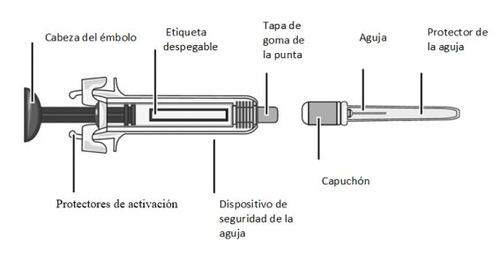
Фигура А
МАТЕРИАЛЫ, не включенные в упаковку (Фигура Б):
Салфетки для очистки с алкоголем | Вата или стерильная марля | Контейнеры для утилизации острых и колющих предметов для безопасной утилизации использованных игл и шприцев |

Фигура Б
Поместите все необходимые для инъекции предметы на плоскую, чистую и хорошо освещенную поверхность, например, на стол.
КАК ВВЕСТИ ИНЪЕКЦИЮ | |
Шаг 1: Дайте шприцу достичь комнатной температуры | |
Фигура С | Осторожно выньте из холодильника упаковку МИРЦЕРЫ предварительно заполненного шприца. Держите шприц и иглу внутри упаковки, защищенные от света, и дайте им достичь комнатной температуры не менее чем за 30 минут (Фигура С). ? Если лекарство не достигнет комнатной температуры, инъекция может быть неприятной и затруднит давление на поршень. ? Не нагревайтешприц каким-либо другим способом. |
Фигура Д | Откройте коробку и выньте из упаковки пластиковую лоток МИРЦЕРЫ предварительно заполненного шприца, не снимая защитную пленку (Фигура Д). |
Шаг 2: Мойте руки | |||||
| |||||
Фигура Г | Осмотрите шприц на наличие повреждений и проверьте срок годности, указанный на шприце и упаковке. Это важно для обеспечения того, что шприц и лекарство безопасны для использования (Фигура Г). Неиспользуйте шприц, если: ? Вы случайно уронили его. ? Любая часть шприца кажется повреждённой. ? Содержимое мутное, белое или содержит частицы.
? Срок годности истек. |
Шаг 4: Прикрепите иглу к шприцу
Фигура Х | Держите шприц крепко за середину и снимите защитный колпачок с кончика шприца (согнув и потянув) (Фигура Х).
? Не трогайтезащитные колпачки. ? Не нажимайтена поршень. ? Не тянитеза поршень. |
Фигура И | Держите упаковку иглы крепко обеими руками и проверьте, не повреждена ли игла. Снимите защитный колпачок иглы, используя поворотное движение и снимая колпачок, как показано на иллюстрации (Фигура И). Немедленно выбросьте колпачок иглы в контейнер для утилизации острых и колющих предметов. Не снимайтезащитный колпачок иглы, выполняющий эту функцию. Не используйте иглу, если:
|
Фигура Й | Прикрепите иглу к шприцу, надавливая ее крепко на шприц и слегка поворачивая (Фигура Й). |
Шаг 5: Снимите защитный колпачок шприца и приготовьтесь к инъекции | |
Фигура К | Держите шприц крепко одной рукой за середину корпуса и снимите защитный колпачок шприца другой рукой. Выбросьте защитный колпачок шприца в контейнер для утилизации острых и колющих предметов (Фигура К).
|
Фигура Л | Чтобы удалить пузырьки воздуха из предварительно заполненного шприца, держите шприц с иглой вверх. Аккуратно постучите по шприцу, чтобы пузырьки поднялись (Фигуры Л и М). |
Фигура М | Медленно надавите на поршень, чтобы удалить весь воздух, как показал вам медицинский специалист (Фигура М). |
Шаг 6: Сделайте инъекцию Существует два способа (пути) введения МИРЦЕРЫ в ваш организм. Следуйте рекомендациям, которые дал вам медицинский специалист, о том, как вводить МИРЦЕРУ. | |
Подкожный путь: Если вам рекомендовали вводить МИРЦЕРУ под кожу, введение должно осуществляться следующим образом. | |
Фигура Н | Выберите один из рекомендуемых мест для инъекции. Можно вводить МИРЦЕРУ в верхнюю часть руки, в бедро или в живот, за исключением области вокруг пупка (Фигура Н). Задняя часть верхней части руки не является рекомендуемым местом для самоинъекции. Используйте эту зону инъекции только в том случае, если вы вводите лекарство другому человеку. При выборе места инъекции: ? Выберите место инъекции, отличное от того, где вы сделали предыдущую инъекцию, на расстоянии не менее трех сантиметров. ? Неделайте инъекцию в зонах, которые могут быть раздражены пояском или поясом одежды. ? Неделайте инъекцию в родинки, шрамы, синяки или зоны, где кожа чувствительна, красная, твердая или повреждена. |
Фигура О | Очистите выбранную зону инъекции с помощью салфетки с алкоголем, чтобы уменьшить риск инфекции; следуйте инструкциям салфетки с алкоголем (Фигура О). ? Дайте коже высохнуть в течение примерно 10 секунд. ? Убедитесь, что нетрогаете очищенную область перед инъекцией и не дуете на нее. ? Немедленно выбросьте салфетку с алкоголем. |
Фигура П
Фигура К | Примите удобную позу перед тем, как сделать инъекцию МИРЦЕРЫ. Чтобы обеспечить правильное введение иглы в кожу, зажмите кожу в месте инъекции свободной рукой. Важно зажать кожу, чтобы обеспечить введение иглы под кожу (в жировую ткань), но не глубже (в мышцу). Если инъекция сделана в мышцу, она может быть неприятной (Фигура П). Осторожно введите иглу полностью в кожу под углом 90°, делая быстрое движение, как если бы вы бросали дротик. Затем держите шприц на месте и перестайте зажимать кожу. Недвигайте иглу, пока она находится в коже. Как только игла будет полностью введена в кожу, медленно надавите на поршень большим пальцем и против упоров, пока не будет введено все лекарство, держа шприц пальцами указателя и среднего. Стержень поршня должен быть полностью внизу (нажатым), и вы должны услышать "щелчок", указывающий на активацию устройства безопасности иглы (Фигура К). |
| Неотпускайте поршень до окончания инъекции или до того, как полностью нажмете на поршень. Выньте шприц из кожи, НЕотпуская поршень (Фигура Р). |
Фигура Р
Фигура С | Отпустите поршень, позволяя устройству безопасности иглы шприца защитить иглу (Фигура С). |
|
предварительно загруженная с оттянутым поршнем, показывающая подключенную иглу и частично удаленную прозрачную защиту"> Фигура Т | Теперь вы можете удалить отсоединяемую этикетку, если это необходимо (Фигура Т). | |||
После инъекции: ? Поместите стерильный ватный шарик или марлю на место инъекции и прижмите на несколько секунд. ? Немедленно утилизируйте ватный шарик или марлю после использования. ? Нетрите место инъекции грязной рукой или тряпкой. ? Если необходимо, можно покрыть место инъекции небольшим бинтом. Утилизируйте шприц: ? Непытайтесь снова надеть защитный чехол на иглу. ? Неповторно используйте и не стерилизуйте шприц и/или иглу. ? Невыбрасывайте использованный шприц с иглой в домашний мусор. ? Выбрасывайте использованные шприцы в контейнер для утилизации колющих/режущих предметов и/или в соответствии с правилами санитарных властей. ? Утилизируйте заполненный контейнер для утилизации колющих/режущих предметов. ВЕНОЗНАЯ ВСТАВКА: Если медицинский специалист порекомендовал вам вводить МИРЦЕРУ в вену, необходимо следовать описанному ниже процессу. После подготовки шприца согласно описанию шагов 1-5: Очистите венозный порт гемодиализного трубка с помощью спиртовой салфетки, как указано поставщиком или производителем. Немедленно утилизируйте спиртовую салфетку после использования.
Шаг 7: Утилизируйте использованный шприц с иглой | ||||
| ||||
- Страна регистрации
- Активное вещество
- Требуется рецептДа
- Производитель
- Информация носит справочный характер и не является медицинской рекомендацией. Перед приемом любых препаратов проконсультируйтесь с врачом. Oladoctor не несет ответственности за медицинские решения, принятые на основе этого контента.
- Аналоги МИРЦЕРА 30 микрограмм/0,3 мл РАСТВОР ДЛЯ ИНЪЕКЦИЙ В ПРЕДНАПОЛНЕННОМ ШПРИЦЕФорма выпуска: ИНЪЕКЦИОННЫЙ РАСТВОР, 100 мкгАктивное вещество: Метокси-полиэтиленгликоль-эпоэтин βПроизводитель: Roche Registration GmbhТребуется рецептФорма выпуска: ИНЪЕКЦИОННЫЙ РАСТВОР, 120 мкгАктивное вещество: Метокси-полиэтиленгликоль-эпоэтин βПроизводитель: Roche Registration GmbhТребуется рецептФорма выпуска: ИНЪЕКЦИОННЫЙ РАСТВОР, 150 мкгАктивное вещество: Метокси-полиэтиленгликоль-эпоэтин βПроизводитель: Roche Registration GmbhТребуется рецепт
Аналоги МИРЦЕРА 30 микрограмм/0,3 мл РАСТВОР ДЛЯ ИНЪЕКЦИЙ В ПРЕДНАПОЛНЕННОМ ШПРИЦЕ в других странах
Лучшие аналоги с тем же действующим веществом и терапевтическим эффектом.
Аналог МИРЦЕРА 30 микрограмм/0,3 мл РАСТВОР ДЛЯ ИНЪЕКЦИЙ В ПРЕДНАПОЛНЕННОМ ШПРИЦЕ в Ukraine
Врачи онлайн по МИРЦЕРА 30 микрограмм/0,3 мл РАСТВОР ДЛЯ ИНЪЕКЦИЙ В ПРЕДНАПОЛНЕННОМ ШПРИЦЕ
Консультация по дозировке, побочным эффектам, взаимодействиям, противопоказаниям и продлению рецепта на МИРЦЕРА 30 микрограмм/0,3 мл РАСТВОР ДЛЯ ИНЪЕКЦИЙ В ПРЕДНАПОЛНЕННОМ ШПРИЦЕ – по решению врача и с учетом местных правил.





